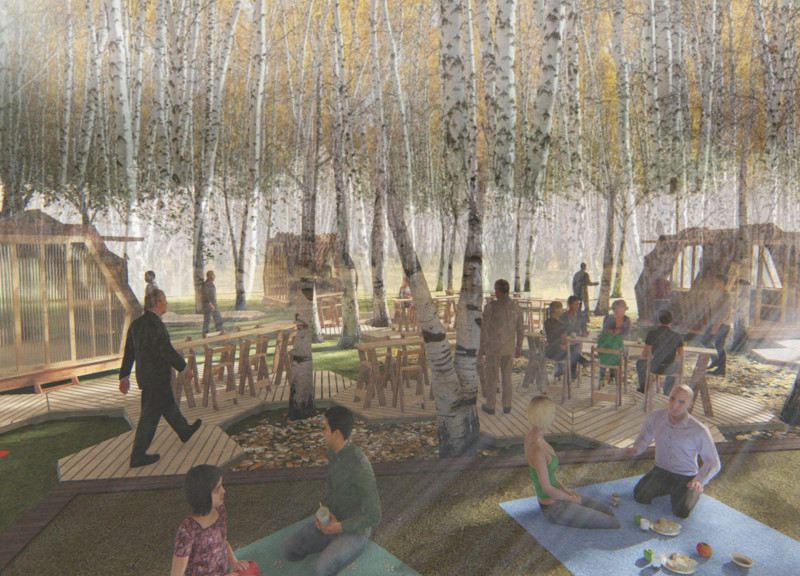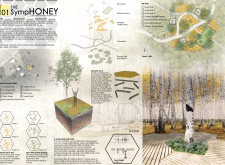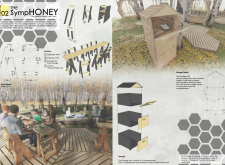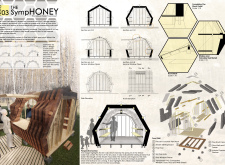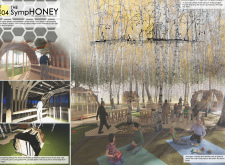5 key facts about this project
The SympHONEY Food Court integrates closely with its surroundings while encouraging community interaction. Located among birch trees, it provides a lively space for festival attendees to gather, rest, and enjoy culinary offerings. The design is influenced by the structure of a honeycomb, using hexagonal shapes to create a functional and visually appealing environment.
Layout and Structure
The layout consists of several key elements, including three food stalls, a caterer storage area, and various dining spaces. These components are thoughtfully arranged to encourage movement and socialization among visitors. The natural shade from the birch trees enhances the comfort of the space, offering areas where people can relax and interact with one another.
Materiality
Locally sourced treated timber, including pine, poplar, and aspen, is primarily used in the construction. This choice reflects a commitment to sustainability and environmental awareness. The use of this timber is evident in the modular decks, which provide support, while also protecting the soil from the pressure of foot traffic. The natural materials contribute to the overall aesthetic and serve ecological purposes.
Furniture and Fixtures
The furniture is designed for practicality and ease of use. Lightweight, stackable items can be easily rearranged or stored, allowing for versatility in the dining areas. The food stalls are constructed using an innovative interlocking system inspired by the concepts of Leonardo da Vinci. This design choice minimizes the need for fasteners, enhancing stability while maintaining a small footprint.
Lighting and Ambiance
Solar-powered lighting is essential for creating a welcoming atmosphere, especially in the evenings. The lighting highlights the food stalls and adds warmth to the environment, encouraging visitors to partake in the experience. This careful attention to detail in both design and functionality enhances the overall feel of the food court, supporting the spirit of the festival and its connection to the natural landscape.


